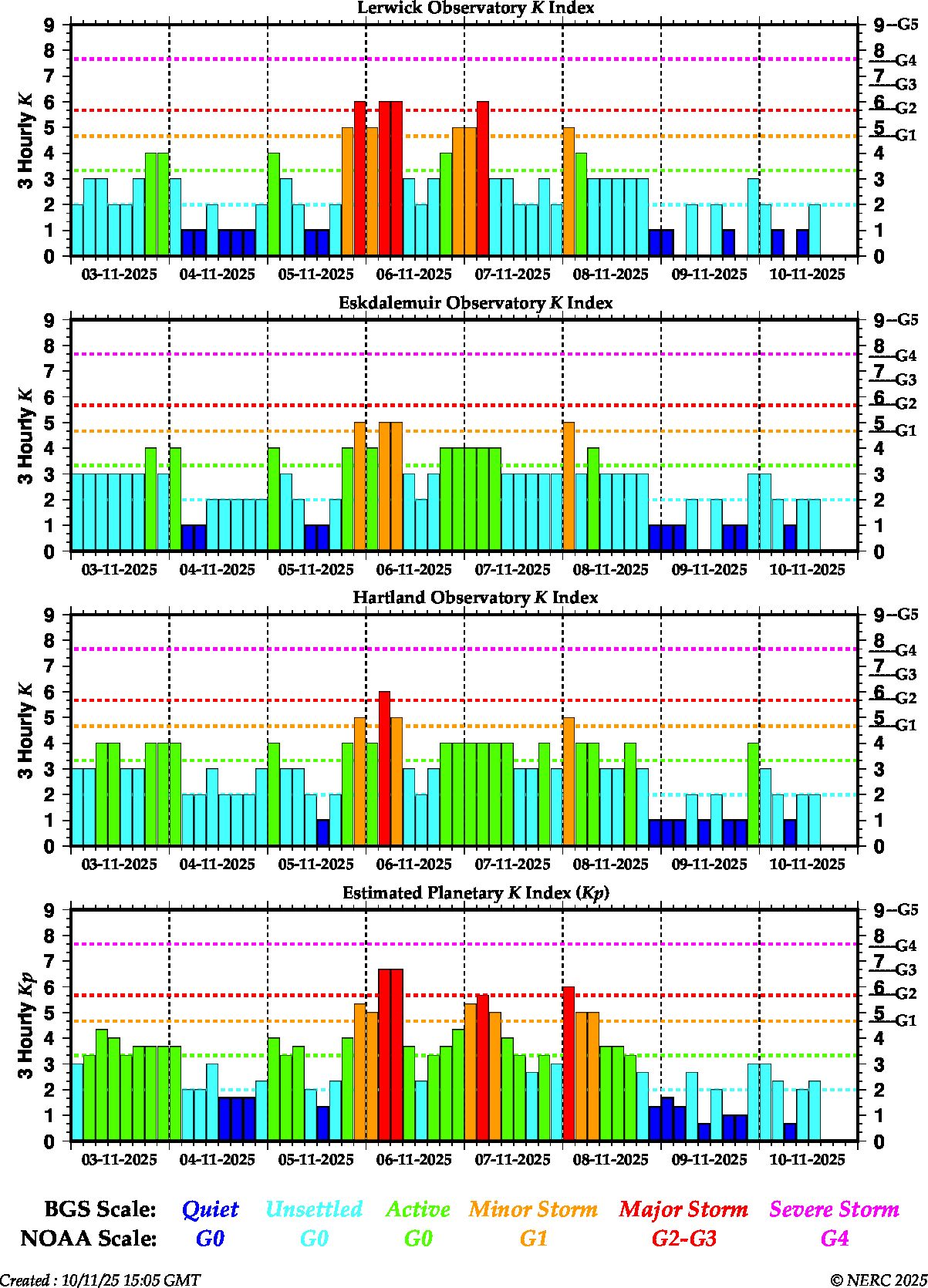Geomagnetic storm update - 10th November 2025
Following several CME arrivals last week, the Earth experienced periods of elevated geomagnetic activity with further enhancements likely on the way.
Between 18:00 on 5th and 12:00 UT on 6th November, geomagnetic conditions reached STORM G1 - STORM G2 levels. Similar activity was observed during the nights of 6th�7th and 7th�8th November, with solar wind speeds peaking at approximately 850 km/s at 10:15 UT on the 7th. However, this did not lead to stronger geomagnetic disturbances due to the interplanetary magnetic field component Bz being relatively weak and only briefly oriented southward.
The same active region, AR 14274, which was responsible for last week's CME activity, has now rotated into a more Earth-facing position. On 9th November at 07:35 UT, it produced an X1.7-class solar flare accompanied by a full halo CME and is expected to arrive during late afternoon or evening (UK time) on 11th November. The solar wind is expected to be already disturbed later today due to CME effects and therefore we expect significant enhancements of geomagnetic activity tomorrow.
Another long-duration X1.2-class solar flare occurred this morning at 09:00 UT. Further imagery and analysis are needed to assess the impact of any associated CME. Initial observations suggests that further increase in geomagnetic activity can be expected in the next couple of days.
Assuming clear dark skies, there is an increased chance of seeing the aurora from tonight and over the next couple of days. Those in Scotland, northern England and Northern Ireland have the best chance if the weather is favourable.
Sign-up to receive Geomagnetic Storm Forecast emails.
Follow us on Twitter:
Follow @BGSauroraAlert for more occasional aurora alerts.
Follow @BGSspaceWeather for daily space weather forecasts.
Glossary
- BGS
- The British Geological Survey is a geoscience research centre that is part of UK Research and Innovation (UKRI) and affiliated to the Natural Environment Research Council (NERC).
- CME or Coronal Mass Ejection
- The eruption of a portion of the outer atmosphere of the Sun into space, caused by rapid changes in its magnetic field. Often occurs along with a solar flare.
- Solar Flare
- Energy released by the explosive reorganisation of magnetic fields within the Sun's atmosphere.
- Coronal Hole
- A region in the Sun’s outer atmosphere (corona) where hot material can flow unrestrained by its magnetic fields out into space.
- Solar Wind
- The ever-present expansion of the Sun’s hot outer atmosphere into the solar system, which carries space weather within it.
- Solar Flare
- Energy released by the explosive reorganisation of magnetic fields within the Sun's atmosphere.
- Sunspot/Active Region
- A region of intense magnetic field in the Sun's visible outer atmosphere often associated with flares and CMEs.


